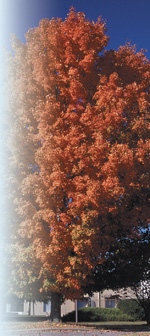Sugar Maples Accent Autumn
go.ncsu.edu/readext?236022
en Español / em Português
El inglés es el idioma de control de esta página. En la medida en que haya algún conflicto entre la traducción al inglés y la traducción, el inglés prevalece.
Al hacer clic en el enlace de traducción se activa un servicio de traducción gratuito para convertir la página al español. Al igual que con cualquier traducción por Internet, la conversión no es sensible al contexto y puede que no traduzca el texto en su significado original. NC State Extension no garantiza la exactitud del texto traducido. Por favor, tenga en cuenta que algunas aplicaciones y/o servicios pueden no funcionar como se espera cuando se traducen.
Português
Inglês é o idioma de controle desta página. Na medida que haja algum conflito entre o texto original em Inglês e a tradução, o Inglês prevalece.
Ao clicar no link de tradução, um serviço gratuito de tradução será ativado para converter a página para o Português. Como em qualquer tradução pela internet, a conversão não é sensivel ao contexto e pode não ocorrer a tradução para o significado orginal. O serviço de Extensão da Carolina do Norte (NC State Extension) não garante a exatidão do texto traduzido. Por favor, observe que algumas funções ou serviços podem não funcionar como esperado após a tradução.
English
English is the controlling language of this page. To the extent there is any conflict between the English text and the translation, English controls.
Clicking on the translation link activates a free translation service to convert the page to Spanish. As with any Internet translation, the conversion is not context-sensitive and may not translate the text to its original meaning. NC State Extension does not guarantee the accuracy of the translated text. Please note that some applications and/or services may not function as expected when translated.
Collapse ▲
Acer saccharum
Photo by Todd Lasseigne
Of the many maples recommended for planting in North Carolina landscapes, none produces more wonderful fall color than the sugar maple, Acer saccharum. Its dull green summer leaves turn a gorgeous orange and yellow with the first frosts. Because of its colossal size, reaching heights greater than 60 feet with similar spread, it is not the tree for the courtyard or small residential property. This beauty is a great tree for large yards.
Given plenty of room to mature and precious years, a sugar maple is almost unsurpassable as a shade tree in the cooler regions of the Tar Heel state. Sugar maple, like Norway maple, is better adapted to the Piedmont Triad and westward unless a heat-tolerant cultivar is selected. It is a slower-growing tree than are red and silver maples, but this beauty has a desirable symmetrical form maturing into an upright oval to round tree. Its strong branches hold up well in ice storms, unlike the silver maple, and are distinguished by smooth gray bark that provides winter interest. Unfortunately, you will not see this tree lining many city streets as it is adversely affected by air pollution in urban environments.

Acer saccharum
Photo by Robert E. Lyons
The newer heat-tolerant cultivars offer more latitude when planting sugar maples in warm Zone 8 landscapes. The cultivar ‘Legacy’ has proven superior in the South and appears to be the best of the drought-tolerant cultivars. Of equal reputation is Green Mountain®, offering dark green leathery foliage with good scorch resistance. If space is a premium, columnar forms are available, such as Appollo™, a slow-growing tree reaching 30 feet in as many years.
As a whole, the genus Acer is one of the treasure troves to be found at the JC Raulston Arboretum where there are dozens of cultivars. In fact, Appollo™ is one of their latest accessions and resides in a new bed adjacent to the parking lot. To learn more, visit jcra.ncsu.edu.
Toby Bost


